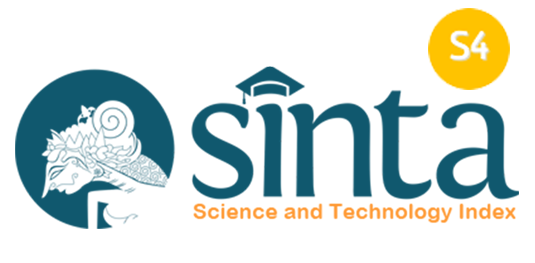BLOOD PRESSURE CONTROL WITH BENSON RELAXATION TECHNIQUE IN HYPERTENSIVE PATIENTS
Downloads
Introduction: A person who has high blood pressure sometimes has difficulty controlling blood pressure. As a result of uncontrolled blood pressure will cause various complications. Efforts that may be made to control blood pressure and avoid depression can be done by using non-pharmacological techniques, one of which is by using relaxation techniques. To find out blood pressure before and after Benson's relaxation technique is carried out in patients with hypertension. Methods: The research design used was quasy experimental, where there were 2 groups, namely the treatment group and the control group. The population of people with hypertension was 38 respondents and simple random sampling technique. Respondents were divided into 2 groups. Insresearch instruments used observation sheets and Geriatric Depression Scale (GDS). Statistical test used wilcoxone Signed Rank Test. Results: It was found that 19 respondents (100%) were found to have decreased blood pressure levels. In the control group or the group that did not do Benson relaxation technique, there was a decrease in blood pressure in as many as 9 respondents (47%). The Geriatric Depression Scale (GDS) value is known that as many as 34 people with hypertension (89%) fall into the category of mild depression with a score of 10-19, the intervention group is 18 people (95%) and 16 people (84%). Benson's relaxation technique on blood pressure obtained a value of p = 0.000 which shows that the influence of Benson's relaxation technique with blood pressure in hypertensive patients. Conclusions:Benson's relaxation technique done regularly will help lower blood pressure and provide relaxation to the muscles so as to reduce muscle tension, reduce stress and calm mind.
Aspiani, R. Y. (2014). Buku Ajar Asuhan Keperawatan Gerontik Aplikasi NANDA, NIC dan NOC (Cetak 1). Trans Info Media.
Atmojo, J. T., Putra, M. M., Astriani, N. M. D. Y.,
Dewi, P. I. S., & Bintoro, T. (2019). Efektifitas Terapi Relaksasi Benson terhadap Tekanan Darah pada Penderita Hipertensi. Interest : Jurnal Terpadu Ilmu Kesehatan, 8(1), 51–60. https://doi.org/10.37341/interest.v8i1.117 Dinas Kesehatan Provinsi Jawa Timur. (2021). Profil Kesehatan Provinsi Jawa Timur 2020. In Dinas Kesehatan Provinsi Jawa
Timur. www.dinkesjatengprov.go.id Direktorat P2PTM. (2019). Hari Hipertensi
Dunia 2019 : “Know Your Number, Kendalikan Tekanan Darahmu dengan CERDIK.” Kementrian Kesehatan Republik Indonesia, 2–6. http://p2ptm.kemkes.go.id/kegiatan- p2ptm/pusat-/hari-hipertensi-dunia-2019- know-your-number-kendalikan-tekanan- darahmu-dengan-cerdik
Dirgayunita, A. (2016). Depresi: Ciri, Penyebab dan Penangannya. Journal An-Nafs: Kajian Penelitian Psikologi, 1(1), 1–14. https://doi.org/10.33367/psi.v1i1.235
Febriyanti, F., Yusri, V., & Fridalni, N. (2021). Pengaruh Terapi Relaksasi Benson Terhadap Tekanan Darah Sistole Pada Lansia Dengan Hipertensi. Menara Ilmu, 15(1), 51–57.
https://doi.org/10.31869/mi.v15i1.2508 Kementerian Kesehatan (Kemenkes) RI.
(2019). Laporan Nasional RISKESDAS 2018. In Badan Penelitian dan Pengembangan Kesehatan (pp. 1–628). Lembaga Penerbit Badan Penelitian dan Pengembangan Kesehatan. http://labdata.litbang.kemkes.go.id/image s/download/laporan/RKD/2018/Laporan_ Nasional_RKD2018_FINAL.pdf
Khatami, F. (2018). Hubungan Hipertensi dengan Depresi pada Pasien Usia Lanjut di RSUP Dr. Mohammad Hoesin Palembang. Universitas Sriwijaya.
Manuntung, A. (2018). Terapi Perilaku Kognitif pada Pasien Hipertensi. Wineka Media.
Mulianda, D., & Umah, E. L. (2021). Penerapan Prosedur Terapi Relaksasi Benson dan Murottal Al Qur’an Surah Ar Rahman Ayat 1-78 terhadap Tekanan Darah pada Pasien Hipertensi Primer di RSUD Ungaran. Jurnal Rumpun Ilmu Kesehatan, 1(3), 12–27.
Nuraini, B. (2015). Risk Factors of Hypertension. J Majority, 4(5), 10–19.
Pratiwi, K. A., Ayubbana, S., & Fitri, N. L. (2021). Penerapan Relaksasi Benson terhadap Penurunan Tekanan Darah pada Pasien Hipertensi di Kota Metro. Jurnal Cendikia Muda, 1(1), 90–97. http://jurnal.akperdharmawacana.ac.id/in dex.php/JWC/article/viewFile/186/97
Pratiwi, L., Hasneli, Y., & Ernawaty, J. (2016).
Pengaruh Teknik Relaksasi Benson dan Murottal Al-Qur’an terhadap Tekanan Darah pada Penderita Hipertensi Primer. Jurnal Online Mahasiswa (JOM) Perpustakaan Fakultas Eperawatan, 2(2), 1212–1220.
Ramadhani, D. Y., Fitriana, E., & Febriyanti, C.
D. (2022). Locus of Control and Self- Efficacy Relationship with Medication Adherence in Elderly with Hipertension. Jurnal Ilmiah Kesehatan (Journal of Health Science), 15(1), 1–8. https://doi.org/https://doi.org/10.33086/jh s.v15.i1.2218
Rohmah, A. I. N., Purwaningsih, & Bariyah, K. (2012). Quality of Life Elderly. Jurnal Keperawatan, 3(2), 120–132. https://doi.org/https://doi.org/10.22219/jk. v3i2.2589
Sandi, J. (2016). Terhadap Disminorea Pada Mahasiswa Tingkat 1 Sekolah Tinggi Ilmu Kesehatan Muhammadiyah Skripsi Diajukan sebagai persyaratan untuk memperoleh Gelar Sarjana Keperawatan. 1–107.
Simandalahi, T., Sartiwi, W., & Novita Angriani L.Toruan, E. (2019). Pengaruh Teknik Relaksasi Benson Terhadap Tekanan Darah Pada Penderita Hipertensi. Jurnal Endurance : Kajian Ilmiah Promblema Kesehatan, 4(3), 641–650. https://doi.org/10.22216/jen.v4i3.4471
WHO. (2015). Noncommunicable diseases : Hypertension. World Health Organization. https://www.who.int/news- room/questions-and- answers/item/noncommunicable- diseases-hypertension
Yulendasari, R., & Djamaludin, D. (2021). Pengaruh Pemberian Teknik Relaksasi Benson terhadap Tekanan Darah pada Penderita Hipertensi. Holistik Jurnal Kesehatan, 15(2), 187–196. https://doi.org/10.33024/hjk.v15i2.4393
Zubaili, M., Jayanti, A., Rahmi, A., & Akbar, W. (2019). ASMARA Ayo Sehat Bersama Para Lansia. In M. Furqan (Ed.), Syiah Kuala Unversity Press. Syiah Kuala University Press.
Copyright (c) 2023 Dwi Yuniar Ramadhani, Dinda Rahma Annisa, Putri Nabila Savira Suwandi, Ulan Apriani, Diah Qurrotul Aini, Anggi Zubatian Artha Dinata

This work is licensed under a Creative Commons Attribution 4.0 International License.
Copyright Notice
1. The journal allows the author to hold the copyright of the article without restrictions.
2. The journal allows the author(s) to retain publishing rights without restrictions.
3. The legal formal aspect of journal publication accessibility refers to Creative Commons Attribution (CC BY).














